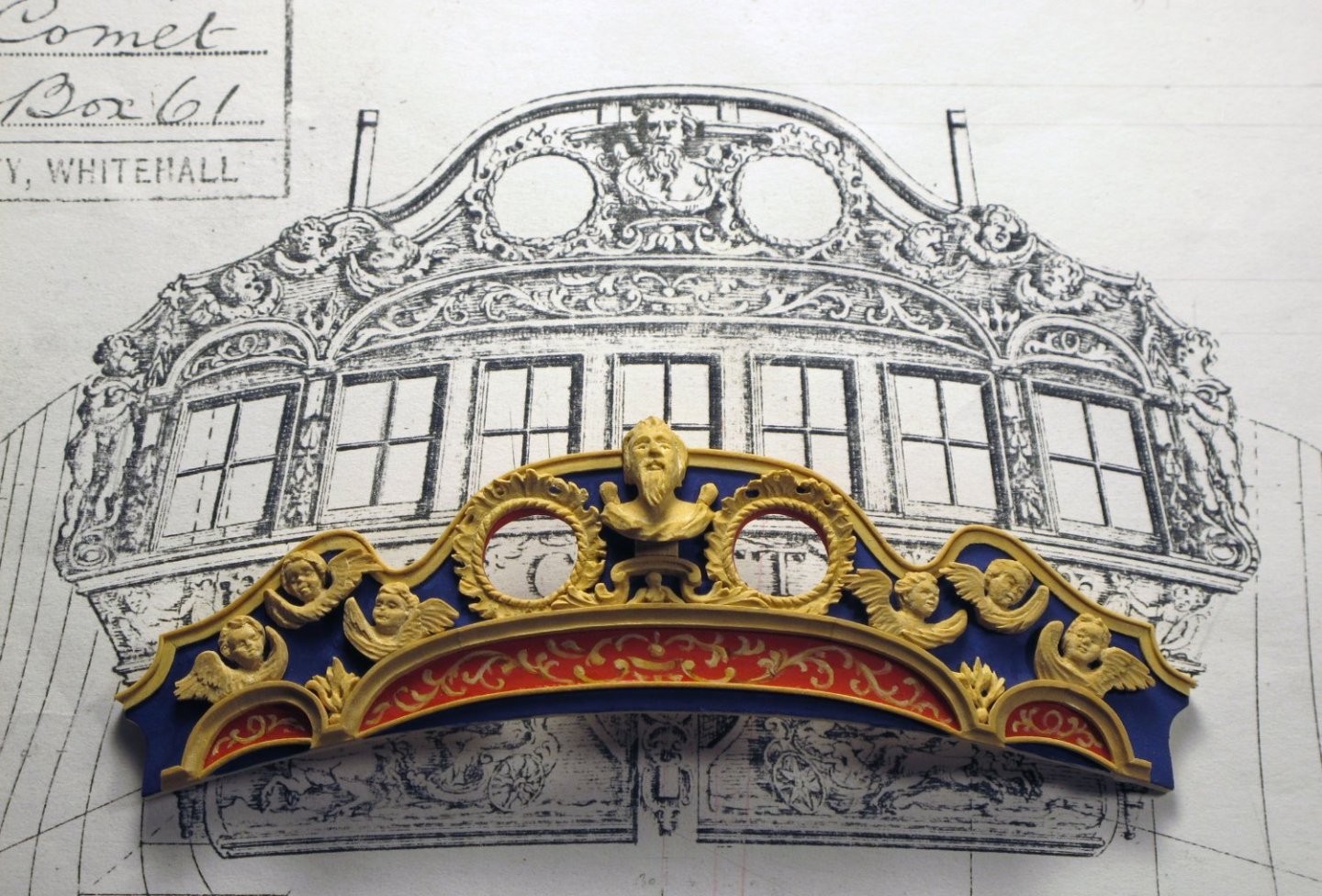-
Posts
13,359 -
Joined
-
Last visited
Content Type
Profiles
Forums
Gallery
Events
Everything posted by druxey
-

Stepping the mast with a plum bob...two questions.
druxey replied to HardeeHarHar's topic in Masting, rigging and sails
While rigging, you can fine-tune the rake (if any) and plumb of the masts. -
The problem is that the rig of a New Testament era Alexandrian grain ship was very different from an 18th century man of war! A semi-swamped boat, even a small one, would have considerable weight. How this was wrestled aboard (in a storm, yet!) would be hard to imagine. An attempt lower it, once bailed, can be imagined with a pair of lines, presumably with some kind of block and tackle that were then cut away.
-
Welcome aboard, Tyler. You will find plenty of resources on this site. There are tutorials on planking, for instance. (More > Planking techniques) Check out other build logs and then start one of your own.
-
What is a year or so between posts, Clare? Seriously, nice to see you and Wolf back. I like your technique on the steering spokes. Looks good at small scale.
-

HMS EURYALUS by Matiz - FINISHED - scale 1:56
druxey replied to matiz's topic in - Build logs for subjects built 1801 - 1850
And do those rollers actually roll? Terrific! -
It takes a little time to learn how to coax wood into the shape that you want. Obviously you are learning fast! And we all need to use a little rubbing alcohol from time to time, no matter how many years we've been at it.
- 62 replies
-
- Muscongus Bay Lobster Smack
- Model Shipways
-
(and 1 more)
Tagged with:
-
Nice to see some progress, however incremental, Marc. When my daughter was young, no model-making occurred for ten years. You are doing much better than that.
- 2,699 replies
-
- heller
- soleil royal
-
(and 9 more)
Tagged with:
-
Chacun à son goût! - Each to their own taste. The individual style of different builders is what makes things interesting. It would be dull indeed if we all built in exactly the same way with the same amount of detail - or lack of it. P.S. Decks were never treenailed to my knowledge, but nailed and plugged, which was almost invisible. However, some builders like to show fastenings. I'm not defending the practice, but if folk like it, let 'em do it!
-
I'm so sorry that you were scammed, Aleksandr. I've tried milling such moldings and still prefer the control of using a scraper that has been shaped from a scrap piece of hacksaw blade. Using a mill sometimes 'eats' the work as one feeds it through! Perhaps this was a lucky accident for you after all.
About us
Modelshipworld - Advancing Ship Modeling through Research
SSL Secured
Your security is important for us so this Website is SSL-Secured
NRG Mailing Address
Nautical Research Guild
237 South Lincoln Street
Westmont IL, 60559-1917
Model Ship World ® and the MSW logo are Registered Trademarks, and belong to the Nautical Research Guild (United States Patent and Trademark Office: No. 6,929,264 & No. 6,929,274, registered Dec. 20, 2022)
Helpful Links
About the NRG
If you enjoy building ship models that are historically accurate as well as beautiful, then The Nautical Research Guild (NRG) is just right for you.
The Guild is a non-profit educational organization whose mission is to “Advance Ship Modeling Through Research”. We provide support to our members in their efforts to raise the quality of their model ships.
The Nautical Research Guild has published our world-renowned quarterly magazine, The Nautical Research Journal, since 1955. The pages of the Journal are full of articles by accomplished ship modelers who show you how they create those exquisite details on their models, and by maritime historians who show you the correct details to build. The Journal is available in both print and digital editions. Go to the NRG web site (www.thenrg.org) to download a complimentary digital copy of the Journal. The NRG also publishes plan sets, books and compilations of back issues of the Journal and the former Ships in Scale and Model Ship Builder magazines.





